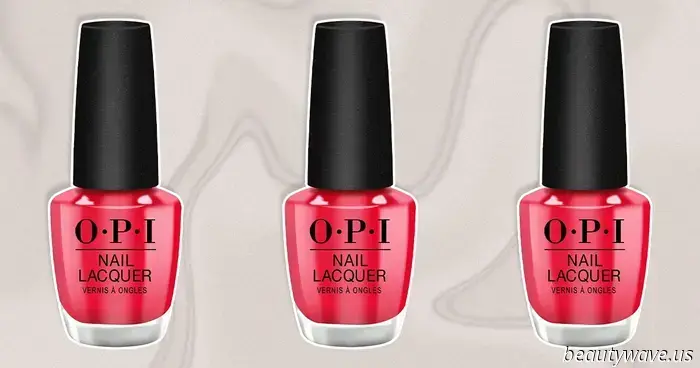
I Used Creatine as a Pre-Workout Supplement for 30 Days—and It Really Made a Difference.
Everywhere I turn—whether at the gym or on my FYP—people are discussing creatine, a supplement designed to enhance workouts and recovery. From before-and-after transformation videos from fitness influencers to TikTok creators praising creatine’s ability to “reshape your body,” it's hard not to be convinced about the supplement. While some trending supplements may seem too good to be true and might not meet expectations, creatine stands out, supported by scientific evidence (more details on that later).
As a beginner in strength training, I was initially doubtful about taking a pre-workout supplement, but after consulting several health professionals who indicated that creatine could boost my energy, endurance, and muscle growth, I chose to give it a try. Here’s what happened when I tested creatine as a pre-workout for 30 days.
What is Creatine, and What Are Its Benefits?
Creatine is one of the most thoroughly studied fitness supplements available, and the majority of research has shown positive outcomes. Creatine, an amino acid produced naturally in the body, helps maintain a consistent energy supply in muscles, particularly during exercise. A 2017 study published by the International Society of Sports Nutrition found that creatine supplementation can enhance athlete performance, accelerate recovery, and help prevent injuries. The study also identified creatine as the most effective nutritional supplement for increasing high-intensity exercise capability and lean body mass during training. The supplement is believed to enhance muscle growth and overall performance by elevating your workload, improving cell signaling, boosting cell hydration, increasing anabolic hormone levels, and decreasing protein breakdown. While there are various forms of creatine, such as monohydrate, hydrochloride (HCl), and ethyl ester, monohydrate is the most researched.
Creatine isn’t just beneficial for gym-goers. According to the findings of a 2020 study in Translational Psychiatry, daily creatine intake may possess antidepressant-like effects, particularly in women. Specifically, individuals consuming about 1 gram of creatine daily exhibited a 31% lower risk of depression compared to those consuming only 0.15 grams daily. Additionally, women may experience other benefits from creatine; for instance, according to PharmEasy, it may help reduce symptoms related to PMS, pregnancy, postpartum situations, and menopause (one study in Obstetrics & Gynecology indicated that a woman’s reproductive cycle is directly associated with the body’s creatine levels).
My Experience with Daily Creatine Intake
Day One
Creatine is flavorless (this was a relief since I’ve encountered numerous protein shakes and powders with a chalky texture and unpleasant taste). Even some supplements marketed as “tasteless” can leave an undesirable residue, but creatine does not. I mixed creatine monohydrate from the brand Mrm into both my coffee and water. While the powder blended more easily into my coffee, I didn't detect any flavor in either. After researching the best ways to consume creatine, I discovered that combining it with carbohydrates like fruits or protein can enhance absorption, and it's recommended to take it at least 30 minutes prior to workouts for maximum fitness benefits.
To evaluate the effectiveness of the creatine supplement, I didn't alter my regular workout routine. I began taking creatine on a Monday, my designated lifting day. I added the powder to my afternoon coffee about half an hour before attending my 45-minute functional strength training class. I opted for my usual 20- and 25-pound weights and got to work. The workout felt equally challenging, but I sensed an increase in my energy level as I completed each exercise. Placebo effect? Possibly.
Day 10
After a few days of mixing creatine into my coffee, I ultimately preferred combining it with orange juice. Since day one, I have done two 5-mile walks along my city’s lakeside trail. By day ten, the 12-3-30 workout felt different. I typically find myself wishing for the last five minutes of a treadmill workout to pass quickly, but this time I was slightly disappointed that the workout was ending. For the first time, I became completely absorbed in the podcast I was listening to, despite the workout’s difficulty. I felt energy and stamina like never before, and it marked the first day I noticed a significant improvement in my endurance.
Day 20
By day twenty, I was lifting the heaviest weights I’ve ever used. I was astonished when I successfully performed four bicep curls with two 30-pound weights (even though my repetitions were low, and I focused on one arm at a time, I was genuinely lifting them). At the start of my fitness journey about six months ago, squatting with 20-pound weights was a struggle. I never imagined I would be lifting more with my upper body less than a month into this creatine trial. While I don’t use the 30-pound weights for every workout, I’ve been integrating them occasionally since then



Other articles
 OPI is said to have modified the color of a beloved shade.
It seems that you have used emojis, but I need text to rephrase. Please provide a sentence or paragraph that you'd like me to rework!
OPI is said to have modified the color of a beloved shade.
It seems that you have used emojis, but I need text to rephrase. Please provide a sentence or paragraph that you'd like me to rework!
 The Viral “Mirror Theory” Is Causing Me to Reevaluate Everything
What if we could shift our mindset to ensure that more things go in our favor?
The Viral “Mirror Theory” Is Causing Me to Reevaluate Everything
What if we could shift our mindset to ensure that more things go in our favor?
 I'm putting together my spring capsule wardrobe—here are the only four trends I'm planning to purchase.
They are deserving.
I'm putting together my spring capsule wardrobe—here are the only four trends I'm planning to purchase.
They are deserving.
 GapStudio's Inaugural Premium Collection Has Arrived—Here Are the Items You Should Purchase Before They Run Out
Hi, denim overcoat.
GapStudio's Inaugural Premium Collection Has Arrived—Here Are the Items You Should Purchase Before They Run Out
Hi, denim overcoat.
 ‘The White Lotus’ Demonstrates How Toxic Girl Trios Can Be
In season three of 'The White Lotus', the antagonist isn't a single character but rather the idea of the trio of girls. Here's how they are demonstrating their toxicity:
‘The White Lotus’ Demonstrates How Toxic Girl Trios Can Be
In season three of 'The White Lotus', the antagonist isn't a single character but rather the idea of the trio of girls. Here's how they are demonstrating their toxicity:
 Attention Millennials: These Going-Out Tops Will Have You Hitting Pause on Your Black Bodysuit
for all your "jeans paired with a stylish top" looks
Attention Millennials: These Going-Out Tops Will Have You Hitting Pause on Your Black Bodysuit
for all your "jeans paired with a stylish top" looks
I Used Creatine as a Pre-Workout Supplement for 30 Days—and It Really Made a Difference.
"I’m surprised by the definition I’m beginning to notice all over my body."
